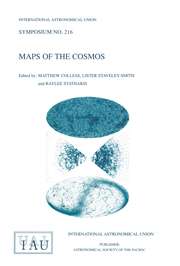No CrossRef data available.
Article contents
Temperature Variations from HST Imagery and Spectroscopy of NGC 7009
Published online by Cambridge University Press: 26 May 2016
Extract
We obtained new HST/STIS long-slit spectra and WFPC2 imagery of the planetary nebula NGC 7009 in order to obtain high spatial resolution of the intrinsic flux ratio [O III] 4364/5008, which is a well-known diagnostic for electron temperature (T e ). Our primary purpose was to quantify T e variations across the nebula. We address whether the observational data support the possibility that the [fractional] mean-square T e variation (t 2) (Peimbert 1967) in NGC 7009 may be as large as ~0.1. Such large values are required to reconcile the “abundance dichotomy” by T e variations alone. The abundance dichotomy (discussed by Liu at greater length elsewhere in this volume) refers to the significantly higher heavy element abundances derived from optical recombination lines (e.g., a factor of ~5 for NGC 7009, Liu et al. 1995) compared with the corresponding values deduced from collisionally-excited lines.
Information
- Type
- Part VI: The Ionized Gas in Planetary Nebulae
- Information
- Copyright
- Copyright © Astronomical Society of the Pacific 2003

